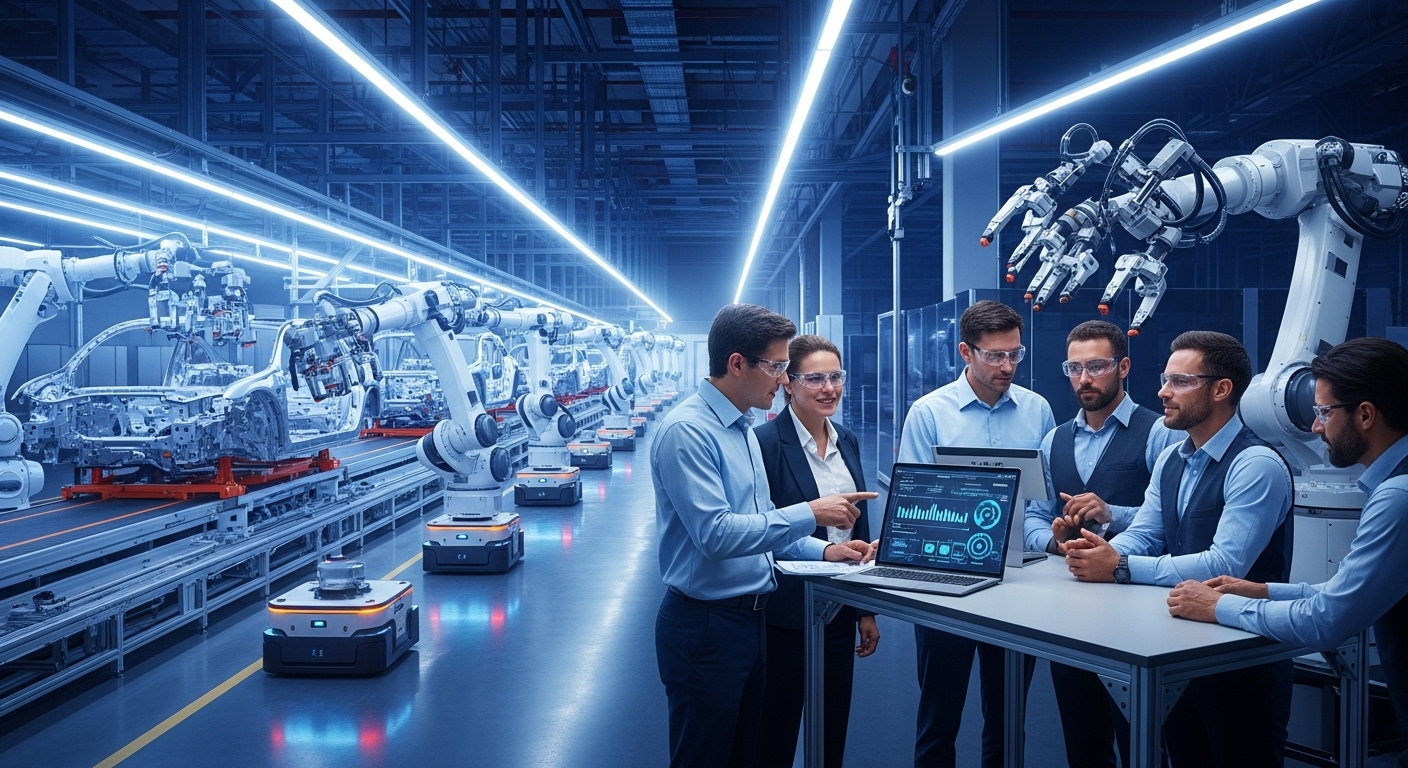Employment Prospects in Advanced Logistics Infrastructure
The landscape of logistics and supply chain management is undergoing a significant transformation, driven by rapid advancements in automation and technology. This evolution is reshaping traditional warehouse operations, introducing new efficiencies, and concurrently altering the nature of employment within the sector. Understanding these shifts is crucial for individuals seeking to enter or advance their careers in a field increasingly defined by sophisticated infrastructure and intelligent systems.

The Evolving Landscape of Logistics and Employment
The global supply chain is experiencing unprecedented changes, largely influenced by e-commerce growth, consumer demand for faster delivery, and the continuous push for operational efficiency. This has led to a surge in the adoption of advanced logistics infrastructure, where automation plays a pivotal role. The integration of robotics, artificial intelligence, and sophisticated software is changing job roles from manual labor to positions requiring technical skills, data analysis, and system management. This shift creates new opportunities while necessitating a re-evaluation of traditional skill sets.
Understanding Warehouse Automation Companies and Their Impact
Warehouse automation companies are at the forefront of this transformation, developing and deploying technologies that streamline operations, enhance accuracy, and improve safety. These companies design solutions ranging from automated guided vehicles (AGVs) and autonomous mobile robots (AMRs) to robotic picking systems and sophisticated warehouse management software. Their innovations directly influence the types of jobs available, moving towards roles that involve monitoring, maintenance, programming, and strategic oversight of automated systems. The insights gained from studying these companies reveal a future where human-machine collaboration is central to logistics operations.
Key Technologies Shaping Advanced Logistics Infrastructure
Advanced logistics infrastructure is built upon several foundational technologies. Robotics, particularly collaborative robots (cobots) and autonomous mobile robots (AMRs), are revolutionizing material handling and order fulfillment. Artificial intelligence (AI) and machine learning algorithms optimize inventory management, demand forecasting, and route planning. Furthermore, the Internet of Things (IoT) enables real-time tracking and data collection, providing valuable insights for operational improvements. These technologies collectively contribute to more intelligent, responsive, and efficient supply chains, demanding a workforce equipped with digital literacy and problem-solving capabilities.
Skills for Roles in Automated Warehouse Environments
As advanced logistics infrastructure becomes more prevalent, the demand for specific skills is evolving. Technical proficiencies in areas such as robot operation and maintenance, data analytics, and software troubleshooting are becoming increasingly valuable. Beyond technical skills, critical thinking, adaptability, and the ability to work effectively in a technology-driven environment are essential. Training and continuous learning initiatives are vital for the existing workforce to transition into these new roles and for new entrants to acquire the necessary competencies for a career in modern logistics.
Leading Entities in Warehouse Automation Technology
Several companies are key players in developing and deploying the advanced automation solutions that are redefining warehouse operations globally. These organizations provide a range of products and services designed to enhance efficiency, safety, and scalability within logistics environments. Their contributions are instrumental in shaping the future of supply chains and, by extension, the employment landscape within the sector. Understanding their offerings provides context for the technological direction of the industry.
| Provider Name | Services Offered | Key Features/Benefits |
|---|---|---|
| Amazon Robotics | Robotic picking, sorting, and storage systems | High-density storage, rapid order fulfillment, scalability |
| KION Group (Dematic) | Automated storage and retrieval systems (AS/RS), conveyors, AGVs | Comprehensive material handling solutions, system integration, global presence |
| Honeywell Intelligrated | Conveyor systems, sortation, palletizers, warehouse execution software | End-to-end automation, supply chain software, operational efficiency |
| Locus Robotics | Autonomous mobile robots (AMRs) for order fulfillment | Collaborative robots, flexible deployment, increased throughput |
| Geek+ | Mobile robot solutions for picking, sorting, and moving | AI-powered scheduling, modular systems, improved warehouse density |
Future Outlook for Logistics and Supply Chain Careers
The trajectory of advanced logistics infrastructure points towards continued innovation and integration of intelligent systems. This ongoing evolution suggests a dynamic future for employment in the sector, emphasizing roles that leverage technology for strategic advantage and operational excellence. The focus will likely remain on developing a skilled workforce capable of managing, optimizing, and adapting to increasingly complex automated environments, ensuring that human expertise remains a critical component of efficient supply chains.




